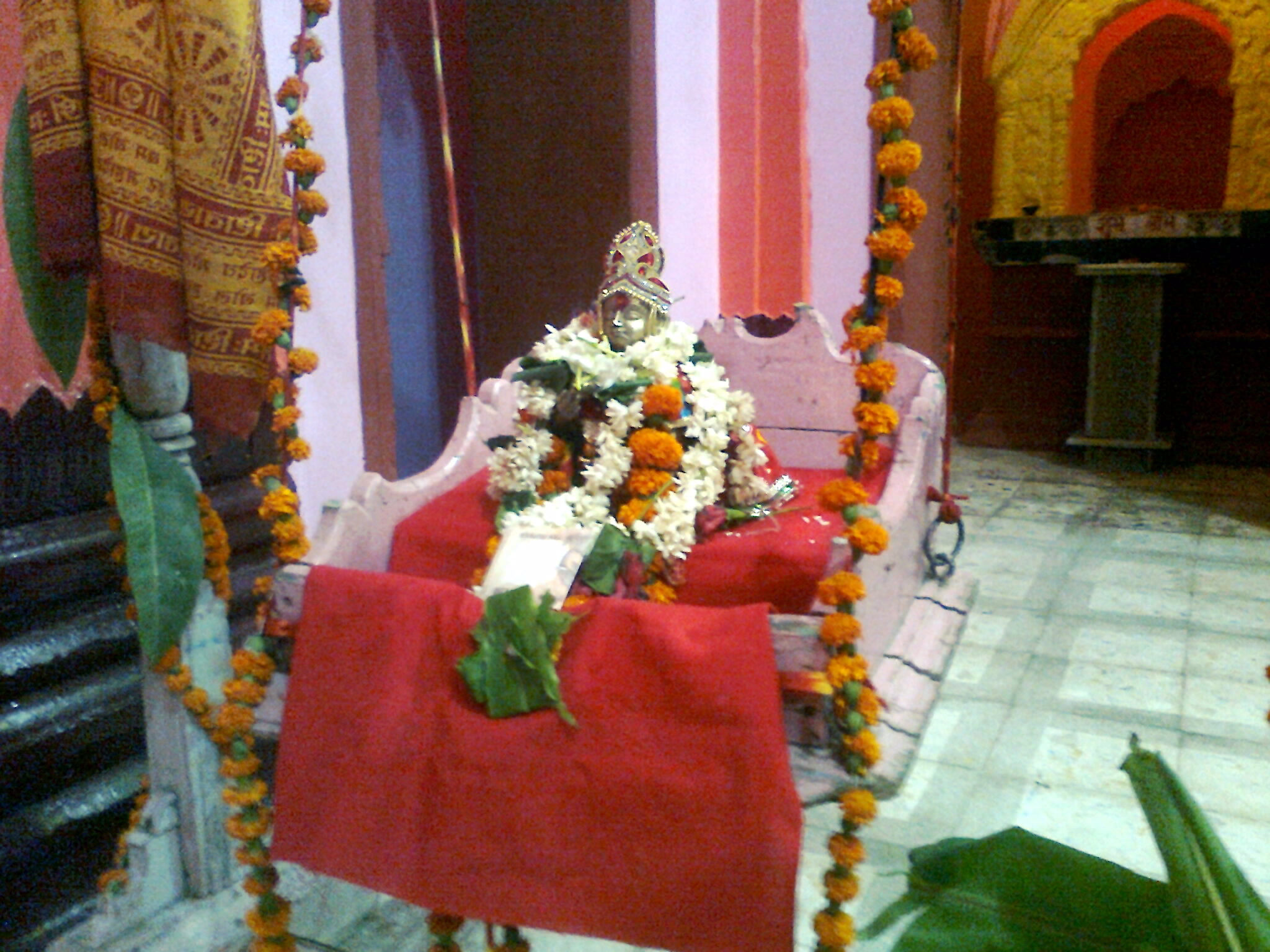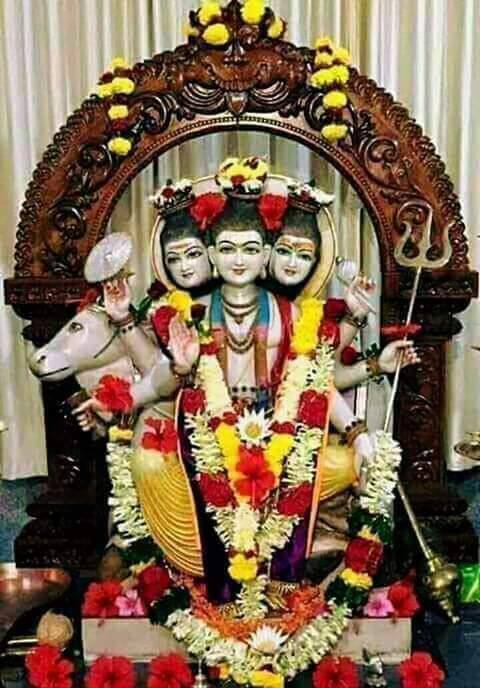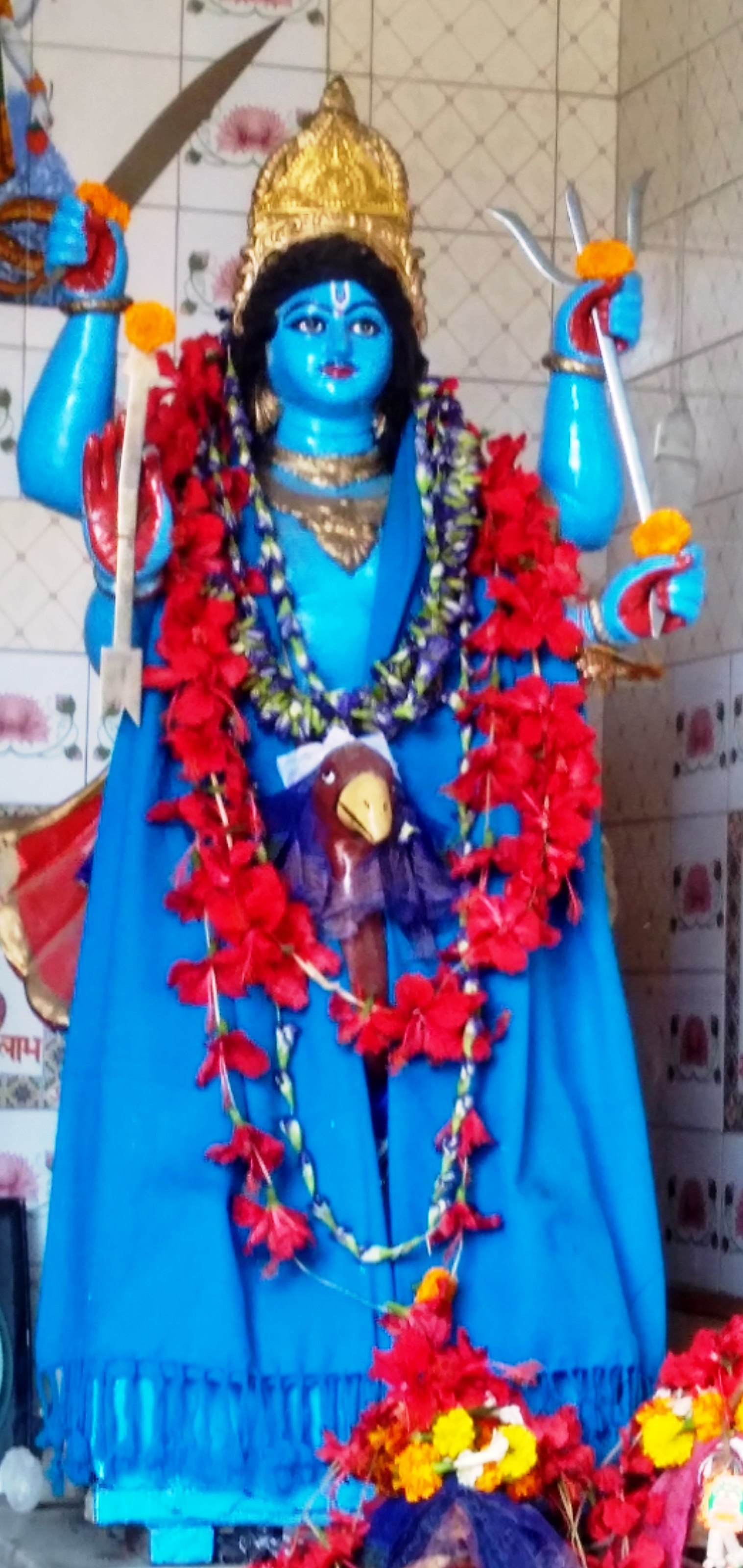|
Brahmachaitanya
Brahmachaitanya or Gondavalekar Maharaj (19 February 1845 – 22 December 1913) was an Indian Hindu saint and spiritual master. Brahmachaitanya was a devotee of the Hindu deity Rama and signed his name "Brahmachaitanya Ramdasi". He was a disciple of Tukamai, and advocated for Japa meditation using the 13-character Ram Naam mantra "Shri Ram Jai Ram Jai Jai Ram" to attain enlightenment. Biography Early life Brahmachaitanya was born on 19 February 1845. As a young child, he memorize the way from the ''Bhagavad Gita'' and bestowed upon him the title of "Brahmachaitanya." He reportedly attained enlightenment at the age of 5. Initiation He arrived in Yehalegaon, a village near Nanded, and met Tukamai, considered a living synthesis of Jnana Yoga, Bhakti Yoga, and Karma Yoga. Ganpati stayed with Tukamai for nine months and followed his instructions. On Ram Navami, Tukamai initiated Ganapati with the mantra "Śrī Rām Jai Rām Jai Jai Rām" ("श्री राम जय राम ... [...More Info...] [...Related Items...] OR: [Wikipedia] [Google] [Baidu] |
Gondavale
Gondavale is a small town in Satara district, Maharashtra, India, from Satara.The town is mainly known for the shrine (Sansthan) and other places associated with Brahmachaitanya, a Hindu saint who died in early part of the 20th century. Shri Samartha Sansthan Gondavale (Sansthan) The temple or Sansthan of Brahmachaitanya, who devoted his entire life toward propagating Naamasmaran ( Ram Naam Mantra - Shri Ram Jai Ram Jai Jai Ram) . Over the last 100+ years, after its formation in 1913, the Sansthan has grown significantly. The Sansthan is managed by four elected trustees and Brahmachaitanya as the permanent first trustee. There are hundreds of volunterss and monks who carry out several tasks under the guidance of the trustees. The trustees have been ensuring that Brahmachaitanya's teachings are carried out to the letter and that there is warmth among the devotees and the whole ambience of the Sansthan is one of piety and contentment. Over its existence, the Sansthan has fac ... [...More Info...] [...Related Items...] OR: [Wikipedia] [Google] [Baidu] |
Tukamai
Tukamai or Tukaram Chaitanya was an Indian mystic and spiritual master. He was born into a Deshastha Brahmin family to Kashinathpanta and Parvatibai at Sukali Veer, a village in present-day Hingoli district, Maharashtra. He was a disciple of Swami Chinmayananda of Umerkhed. Brahmachaitanya Brahmachaitanya or Gondavalekar Maharaj (19 February 1845 – 22 December 1913) was an Indian Hindu saint and spiritual master. Brahmachaitanya was a devotee of the Hindu deity Rama and signed his name "Brahmachaitanya Ramdasi". He was a disci ..., a 19th-century Indian saint and spiritual master was one of his prominent disciples.The Saint of Gondawale K. V. Belsare References {{reflist 19th-century Hindu religious leaders 20th-century Hindu religious leaders Marathi people People from Hingoli district ... [...More Info...] [...Related Items...] OR: [Wikipedia] [Google] [Baidu] |
Brahmanand Maharaj
Brahmanand, sometimes referred to with the addition of the honorific "Maharaj", was a disciple of Brahma Chaitanya a spiritual teacher who promoted the significance of Rama during the Bhakti movement of late 19th-century India. He was born on Magha_(month), Magha Paksha, shuddha Dashami day in Jalihal village in Karnataka. He was an erudite scholar in classical Indian philosophy. His studies and circumstances made him dispassionate towards mundane life and aware of futility of bookish knowledge. Hence he left home and did austerities at Sri Lakshmi Venkatesha Temple of Venkatapur. He was instructed by the lord to go to the north India, in search of Guru. Later he found Brahma_Chaitanya, Brahmachaitanya Maharaj and he did penance under the guidance of his guru at Sarpeshwar Mandir, and attained bliss. He was responsible for the spread of bhakthi movement in Karnataka, by conducting Nama japa and temple consecrations. He died on the Pitru_Paksha, Mahalaya amavasya day of 1918 aNav ... [...More Info...] [...Related Items...] OR: [Wikipedia] [Google] [Baidu] |
Mirabai
Meera, better known as Mirabai and venerated as Sant Meerabai, was a 16th-century Hindu mystic poet and devotee of Krishna. She is a celebrated Bhakti saint, particularly in the North Indian Hindu tradition. Mirabai was born into a Rathore Rajput royal family in Kudki (modern-day Pali district of Rajasthan) and spent her childhood in Merta. She is mentioned in '' Bhaktamal'', confirming that she was widely known and a cherished figure in the Bhakti movement culture by about 1600 CE.Catherine Asher and Cynthia Talbot (2006), India before Europe, Cambridge University Press, , page 109 Most legends about Mirabai mention her fearless disregard for social and family conventions, her devotion to Krishna, her treating Krishna as her husband and being persecuted by her in-laws for her religious devotion. She has been the subject of numerous folk tales and hagiographic legends, which are inconsistent or widely different in details.Nancy Martin-Kershaw (2014), Faces of the Femi ... [...More Info...] [...Related Items...] OR: [Wikipedia] [Google] [Baidu] |
Rama Navami
Rama Navami () is a Hindu festival that celebrates the birthday of Rama, the seventh avatar of the deity Vishnu. people from different parts of Jharkhand attended the world famous international Hazaribagh procession organized in the city every year on the occasion of Ram ramnavmi birt anniversary of Rama amid chants of Jai shri ram. Vaishnava tradition of Hinduism. The festival celebrates the descent of Vishnu as the Rama avatar, through his birth to King Dasharatha and Queen Kausalya in Ayodhya, Kosala. This festival is a part of the Chaitra Navaratri in the spring, and falls on the ninth day of the bright half (Shukla Paksha) of Chaitra, the first month in the Hindu calendar. This typically occurs in the months of March or April by the Gregorian calendar. Rama Navami is an optional holiday for government employees in India.Holiday Calendar< ... [...More Info...] [...Related Items...] OR: [Wikipedia] [Google] [Baidu] |
Dattatreya
Dattatreya ( sa, दत्तात्रेय, ), Dattā or Dattaguru, is a paradigmatic Sannyasi (monk) and one of the lords of yoga, venerated as a Hindu god. In Maharashtra, Goa, Andhra Pradesh, Telangana, Karnataka, Gujarat, and Madhya Pradesh he is a syncretic deity, In Bengal he is known as 'Trinath', avatar of the three Hindu gods Brahma, Vishnu, and Shiva, who are also collectively known as the Trimurti. In other regions, and some versions of texts such as Garuda Purana, Brahma Purana and Sattvata Samhita, he is an avatar of Vishnu only. Several Upanishads are dedicated to him, as are texts of the Vedanta- Yoga tradition in Hinduism. One of the most important texts of Hinduism, namely Avadhuta Gita (literally, "song of the free soul") is attributed to Dattatreya. Over time, Dattatreya has inspired many monastic movements in Shaivism, Vaishnavism, and Shaktism, particularly in the Deccan region of India, south India, Gujarat, Madhya Pradesh, Rajasthan and ... [...More Info...] [...Related Items...] OR: [Wikipedia] [Google] [Baidu] |
Shani
Shani ( sa, शनि, ), or Shanaishchara ( sa, शनैश्चर, ), refers to the divine personification of the planet Saturn in Hinduism, and is one of the nine heavenly objects (Navagraha) in Hindu astrology. Shani is also a male Hindu deity in the Puranas, whose iconography consists of a black figure carrying a sword or danda (sceptre) and sitting on a Crow. He is the god of '' Karma (deeds), ''justice, and retribution and delivers results depending upon one's thoughts, speech, and deeds (karma). Shani is the controller of longevity, misery, sorrow, old age, discipline, restriction, responsibility, delays, ambition, leadership, authority, humility, integrity, and wisdom born of experience. He also signifies spiritual asceticism, penance, discipline, and conscientious work. He married twice, first to Neela, the personification of the Blue Sapphire gemstone and second to Manda, a Gandharva princess. Planet ''Shani'' as a planet appears in various Hindu astronomical te ... [...More Info...] [...Related Items...] OR: [Wikipedia] [Google] [Baidu] |
Samarth Ramdas
Samarth Ramdas (c. 1608 - c. 1681), also known as Sant Ramdas or Ramdas Swami, was an Indian Hindu saint, philosopher, poet, writer and spiritual master. He was a devotee of the Hindu deities Rama and Hanuman. Early life Ramdas or previously Narayan was born at Jamb, a village in present-day Jalna district, Maharashtra on the occasion of Rama Navami, probably in 1608. He was born into a Marathi Deshastha Rigvedi Brahmin family to Suryajipanta and Ranubai Thosar. His father was a devotee of Surya, the Vedic solar deity. Ramdas had an elder brother named Gangadhar. His father died when Narayan was around seven years of age. Narayan turned into an introvert after the demise of his father and was often noticed to be engrossed in thoughts about the divine. According to legend, Narayan fled his wedding ceremony upon hearing a pundit chant the word 'Saavdhan' (Beware!) during a customary Hindu wedding ritual. Then at the age of twelve, he is believed to have walked to Panchavati, ... [...More Info...] [...Related Items...] OR: [Wikipedia] [Google] [Baidu] |
Hinduism
Hinduism () is an Indian religion or ''dharma'', a religious and universal order or way of life by which followers abide. As a religion, it is the world's third-largest, with over 1.2–1.35 billion followers, or 15–16% of the global population, known as Hindus. The word ''Hindu'' is an exonym, and while Hinduism has been called the oldest religion in the world, many practitioners refer to their religion as '' Sanātana Dharma'' ( sa, सनातन धर्म, lit='the Eternal Dharma'), a modern usage, which refers to the idea that its origins lie beyond human history, as revealed in the Hindu texts. Another endonym is ''Vaidika dharma'', the dharma related to the Vedas. Hinduism is a diverse system of thought marked by a range of philosophies and shared concepts, rituals, cosmological systems, pilgrimage sites, and shared textual sources that discuss theology, metaphysics, mythology, Vedic yajna, yoga, agamic rituals, and temple building, among other topi ... [...More Info...] [...Related Items...] OR: [Wikipedia] [Google] [Baidu] |
Chaitanya Mahaprabhu
Chaitanya Mahaprabhu (; born Vishvambhar Mishra) was a 15th-century Indian saint who is considered to be the combined avatar of Radha and Krishna by his disciples and various scriptures. Chaitanya Mahaprabhu's mode of worshipping Krishna with ecstatic song and dance had a profound effect on Vaishnavism in Bengal. He was also the chief proponent of the Vedantic philosophy of Achintya Bheda Abheda Tattva. Mahaprabhu founded Gaudiya Vaishnavism ( the Brahma-Madhva-Gaudiya Sampradaya). He expounded Bhakti yoga and popularized the chanting of the Hare Krishna Maha-mantra. He composed the '' Shikshashtakam'' (eight devotional prayers). Chaitanya is sometimes called Gauranga or Gaura due to his molten gold–like complexion. His birthday is celebrated as Gaura-purnima. He is also called Nimai due to him being born underneath a Neem tree. Life ''Chaitanya'' means "one who is conscious" (derived from Chetana, which means "Consciousness"); ''Maha'' means "Great" and '' ... [...More Info...] [...Related Items...] OR: [Wikipedia] [Google] [Baidu] |
Karma Yoga
Karma yoga ( sa, कर्म योग), also called Karma marga, is one of the four classical spiritual paths in Hinduism, one based on the "yoga of action", the others being Jnana yoga (path of knowledge), Rāja yoga (path of meditation) and Bhakti yoga (path of loving devotion to a personal god). To a ''karma yogi'', right action is a form of prayer. The three paths are not mutually exclusive in Hinduism, but the relative emphasis between Karma yoga, Jnana yoga and Bhakti yoga varies by the individual. Of the classical paths to spiritual liberation in Hinduism, karma yoga is the path of unselfish action.Robert A. McDermott (1975)Indian Spirituality in the West: A Bibliographical Mapping Philosophy East and West, University of Hawai'i Press, Vol. 25, No. 2 (Apr 1975), pp. 228–230 It teaches that a spiritual seeker should act according to dharma, without being attached to the fruits or personal consequences. Karma Yoga, states the '' Bhagavad Gita'', purifies the mi ... [...More Info...] [...Related Items...] OR: [Wikipedia] [Google] [Baidu] |









